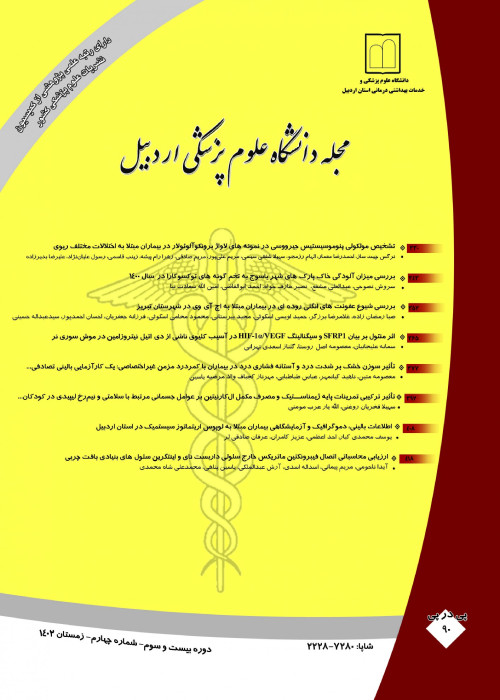Health Status among Migrant Tribes (Ashayer) of Ardabil Province
Providing health services for all population subgroups of a community is a major hallmark for health administration. Little is known about health status of Ashayer population in Iran. This study aims at evaluating health status and quality of health service delivery to them.
In a cross-sectional research 320 households (1800 persons), entered the study. Moreover, blood samples from 458 dogs were taken and studied with both Direct Aglutination Test (DAT) and a newly presented dipstick test. All children under 12 were also studied with DAT. In computing the sample size the generalizability for 63 variables with a minimum and maximum probability level of 90% and 97% respectively were taken into account and since the cluster sampling was employed, the Design Effect would be at least 1.56 and for different variables in the first sample it would be at most 4.
Only 30 households(9.7%) used piped water supply inside their houses while most of the other families (41%) obtained their water from mobile water tanks. Residual water chlorine was measured to be zero in 88.7% of the samples taken from drinking water of Ashayer. 89 (27.8%) households had lavatories and 22 (7%) households had bathrooms inside their houses. 90.4% of those using raw vegetables washed them only with plain water. Monthly incidence rate for accidents was 230 per 10000. 18.1% of women in reproductive age had a history of abortion. Unwanted pregnancy rate was 38.9%. 47.1% of women with a labor history in past three years had never been visited by any person legally allowed to do so. Women in reproductive age had a poor knowledge about contraceptive methods. The minimum delay for vaccination was 16.9 (SD= 19.26) days regarding the third dose of OPV and the highest delay in vaccination was 46.44 (SD=60.7) days belonging to the third dose of HBV. From all 503 persons above 12 years old, 77 cases had hypertension. Periodontal easy bleeding was observed in 13.7 % and pyorrhea in 19.3%. 10.2 % had aching neck, 18.7% had backache and arthralgia was shown in 13.5%. The unmet need for physician's visit was 64.8%. The frequency of positive cases of leshmaniasis was 3.4% and 3.06% for boys and girls respectively. 28 male and 6 female dogs were positive in DAT test making an overall positive rate of 7.4%. Sensitivity of dipstick test was higher than 80 percent only when golden standard was considered to be DAT ≥ 1 /640.
Many of the health indices of Ashayer except for vaccination were suitable. This requires further attemps on the part of govermental and health outhorities. Kale-azar disease can spread to the north of the province as well as the neighboring provinces due to the migration of these tribes. It is predicted that Bilesavar and Parsabad cities will be added to the andemic regions of this disease in coming years. Using dipstick test recently offered by WHO is recommended to be used to screen the infected dogs.
- حق عضویت دریافتی صرف حمایت از نشریات عضو و نگهداری، تکمیل و توسعه مگیران میشود.
- پرداخت حق اشتراک و دانلود مقالات اجازه بازنشر آن در سایر رسانههای چاپی و دیجیتال را به کاربر نمیدهد.


